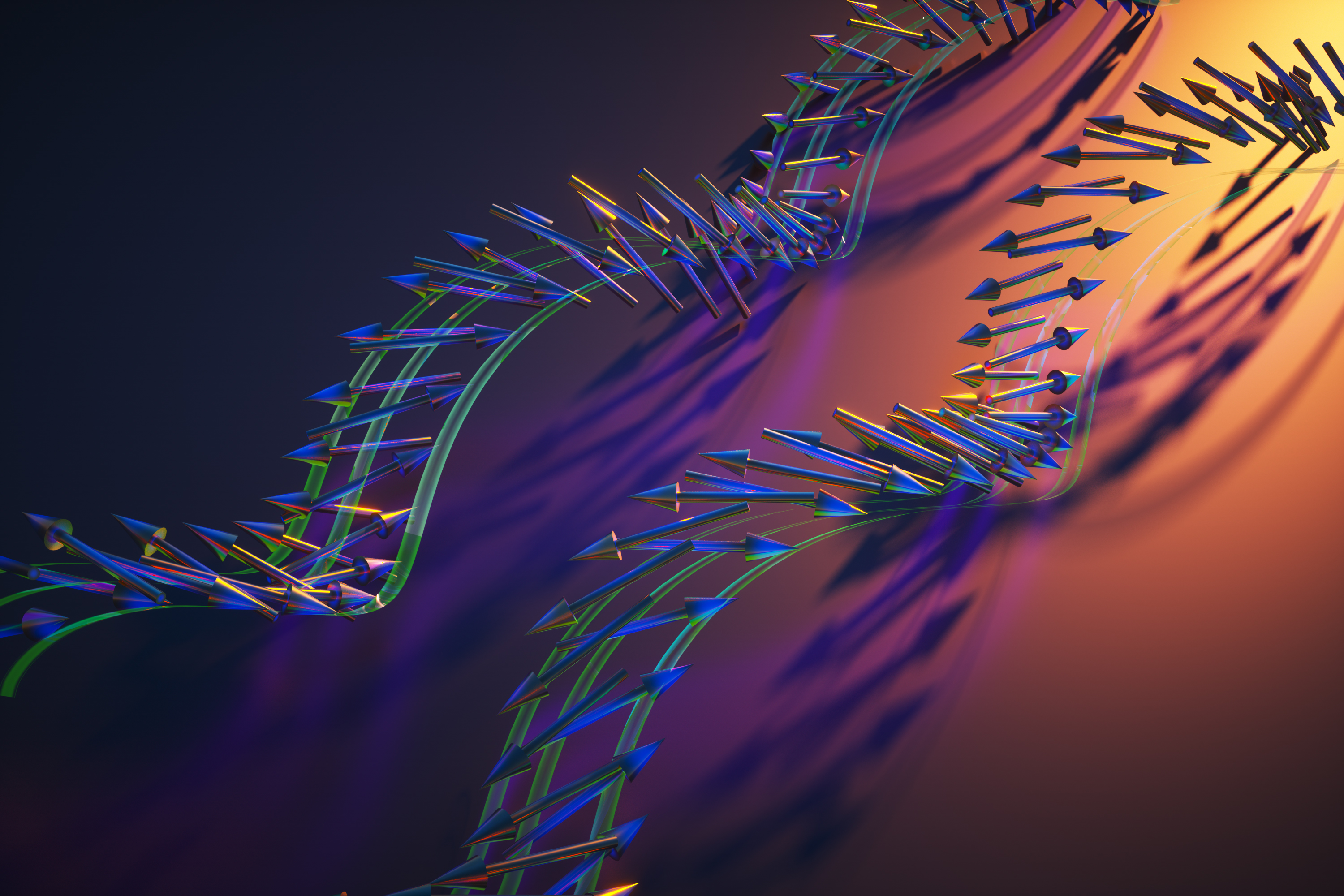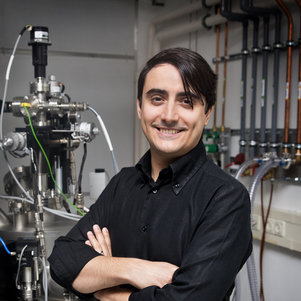Kick-starting supersonic waves in antiferromagnets
A team of researchers led by a group from Delft University of Technology (TU Delft) has demonstrated a new technique to generate magnetic waves in antiferromagnets that propagate through the material at a speed much larger than the speed of sound. These so-called spin waves produce a lot less heat than conventional electric currents, making them promising candidates for future electronic devices with significantly reduced power consumption.
Physicists and engineers from all around the world are constantly thinking of ways to improve the performance of conventional electronic devices. Many of their ideas revolve around substituting the electrical currents, which carry the signals in information processing devices, by waves. Waves are coherent excitations, which means that information can be encoded into both the amplitude and the phase of the wave. Interference and diffraction, natural phenomena for a wave of any nature, enable the creation of so-called wave-based logic circuits, the tiny building blocks for future data processing applications. Since waves travel through materials with significantly lower resistance than electric currents, they have the potential to drastically reduce power consumption in future electronics.
Spin waves in antiferromagnets
Magnetic waves, also called spin waves, are one of the most promising candidates for wave-based logic devices. Experiments using spin waves in regular (ferro)magnets have shown that it is possible to build small logic devices without using electrical currents. In recent years, there has been a focus shift towards the use of antiferromagnets. In antiferromagnetic materials, the microscopic magnetic moments of neighbouring atoms – the spins – are tightly coupled and alternate between two opposite orientations, such that there is no net magnetisation.
The existence of this alternating order leads to significantly higher spin-wave propagation velocities and the possibility of terahertz operational clock-rates. However, absence of the magnetisation also makes antiferromagnets magnetically ‘invisible’: it is very hard to detect and influence the antiferromagnetic order. Practice has shown that generating and detecting spin waves that can move through antiferromagnetic media is even harder. As a result, computing concepts based on antiferromagnetic spin waves have so far existed as a theoretically appealing but experimentally uncharted field of exciting opportunities. Finding new ways to control the magnetic moments in antiferromagnets is therefore of crucial importance.
An international team of scientists from Delft, Kiev, Lancaster, Nijmegen and Salerno has now succeeded in creating coherent magnetic waves with nanometer-sized wavelength in an antiferromagnet that travel through the material at supersonic velocities. Their trick was to use ultrashort pulses of light to both create and detect these spin waves. “While we knew that ultrashort pulses of light are capable of influencing magnetic properties of antiferromagnetic materials, the possibility to launch short-wavelength propagating spin waves with light was still quite unexpected”, says researcher Jorrit Hortensius of Delft University of Technology. “This is because light pulses lack the momentum necessary to make the spin waves propagate.”

A local ultrafast kick
It has been known for a few years that ultrashort pulses of light might hold the key to creating high-frequency propagating spin waves. Within a picosecond (a millionth of a millionth of a second), such pulses can shake up the ordered magnetic system and start magnetic motion in antiferromagnets. However, typically that excited area remains localized and does not support propagation. Making the excitation travel across the material required another hidden ingredient. “Most antiferromagnetic materials are dielectrics, which means that they are transparent for visible light. We instead used ultraviolet light that is absorbed strongly, so that we only shake the spins very close to the material’s surface, within the so-called skin-depth”, says researcher Dmytro Afanasiev. “The ultrafast kick with the strong confinement at the material’s surface turned out to be the combination to induce the propagation of antiferromagnetic spin waves.”
The spin waves have wavelengths of around 100 nm, which is a lot smaller than the wavelength of the light. This makes the researchers believe that they might have created even shorter spin waves, even though they cannot observe them with their current instruments. Jorrit Hortensius: “As spin waves with very small wavelengths are the most interesting for creating highly compact computational elements, we are very curious to know what the limit is.”
This work brings future spin-wave devices in antiferromagnets closer to reality. Ultimately, the goal is to create nanoscale devices which produce very little heat. For the moment, though, Andrea Caviglia, associate professor and research group leader at TU Delft, emphasizes the need to explore: “One of the open questions is if we can adapt this technique to make non-local electric measurements, in which we excite the antiferromagnetic spin waves on one side of the material and detect them a bit further down the road.”
More information
Paper
Andrea Caviglia

Jorrit Hortensius
